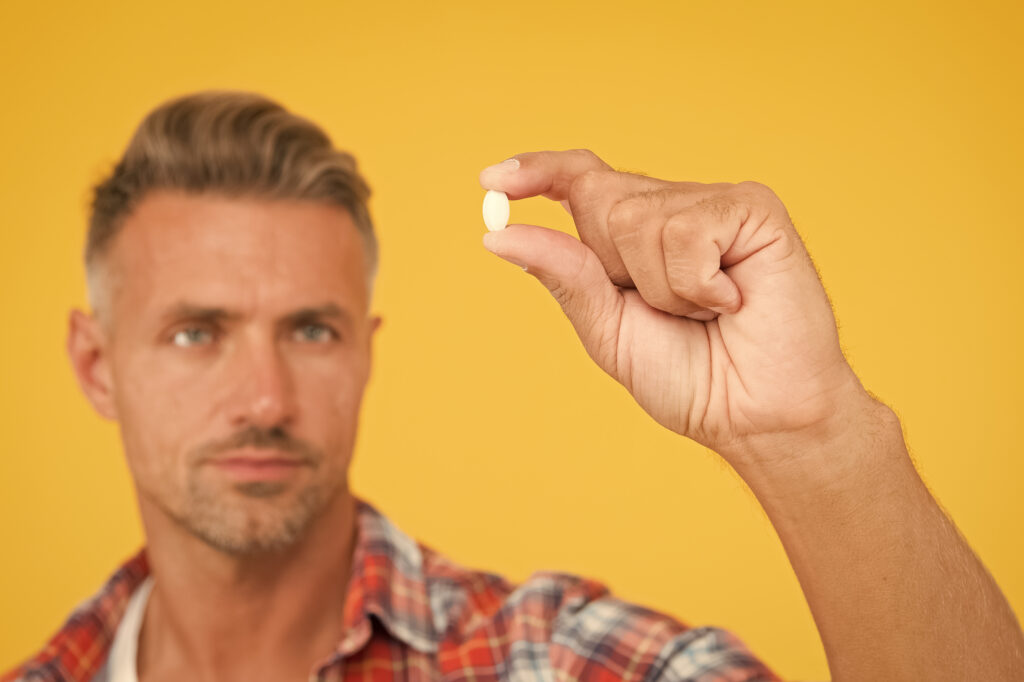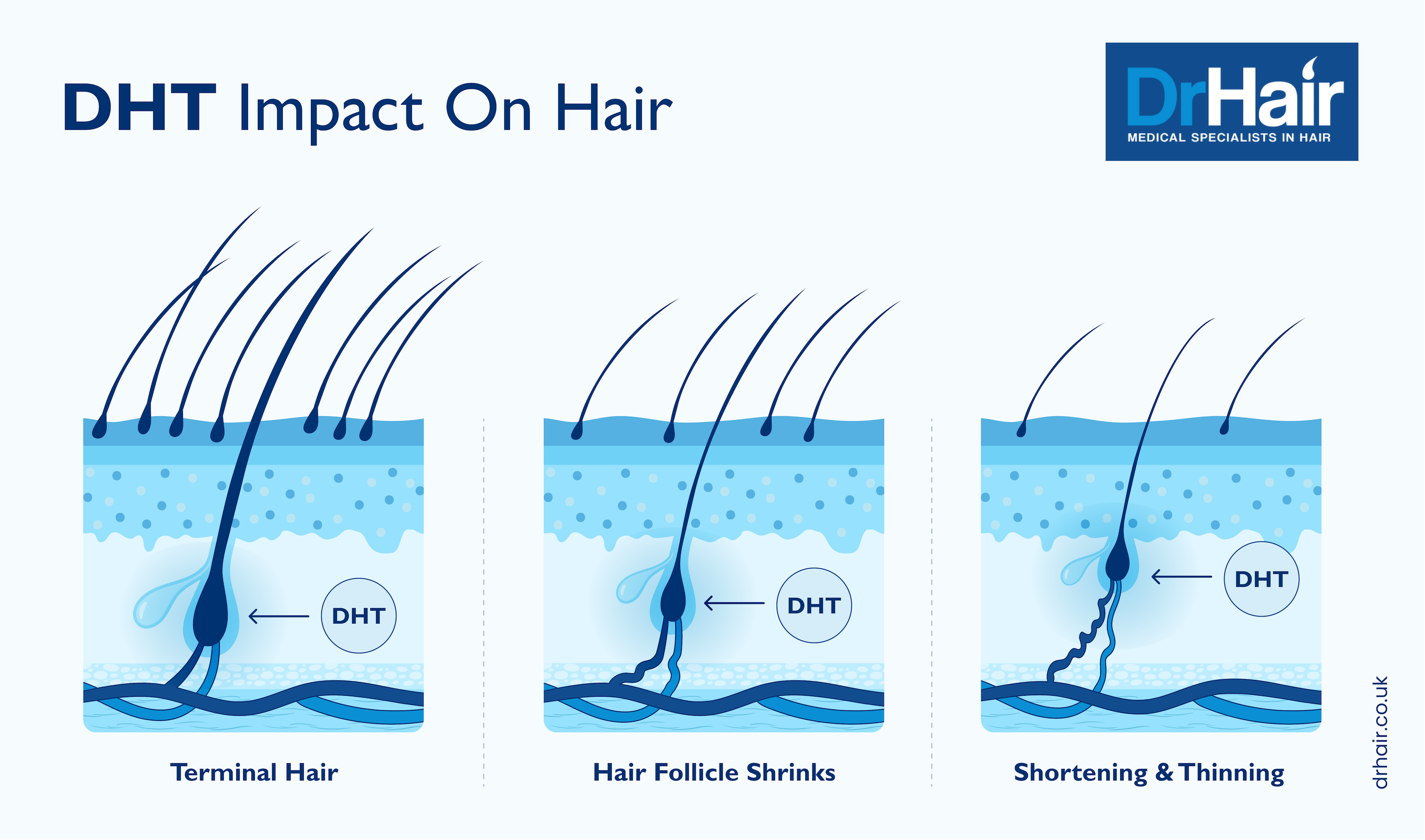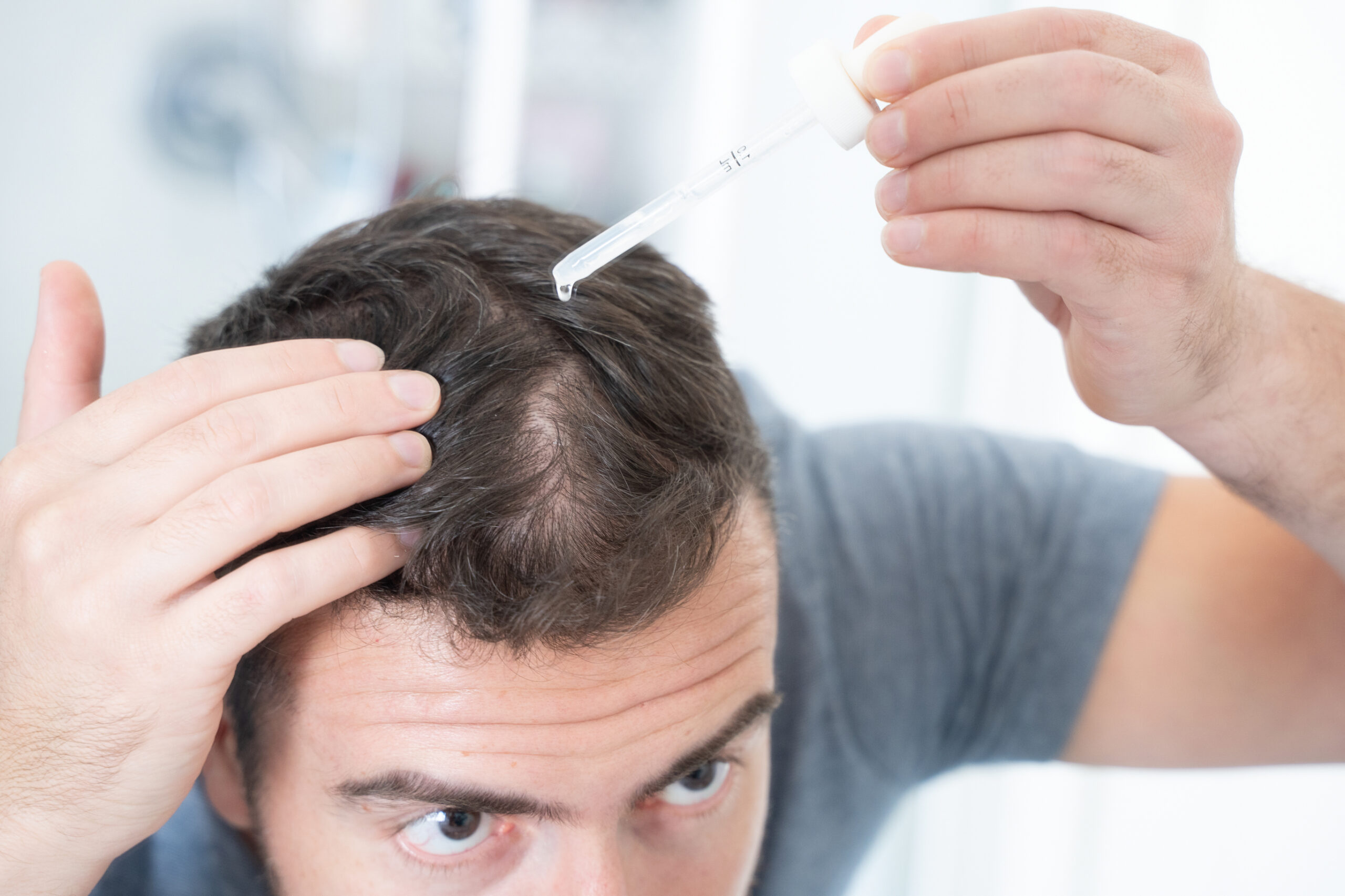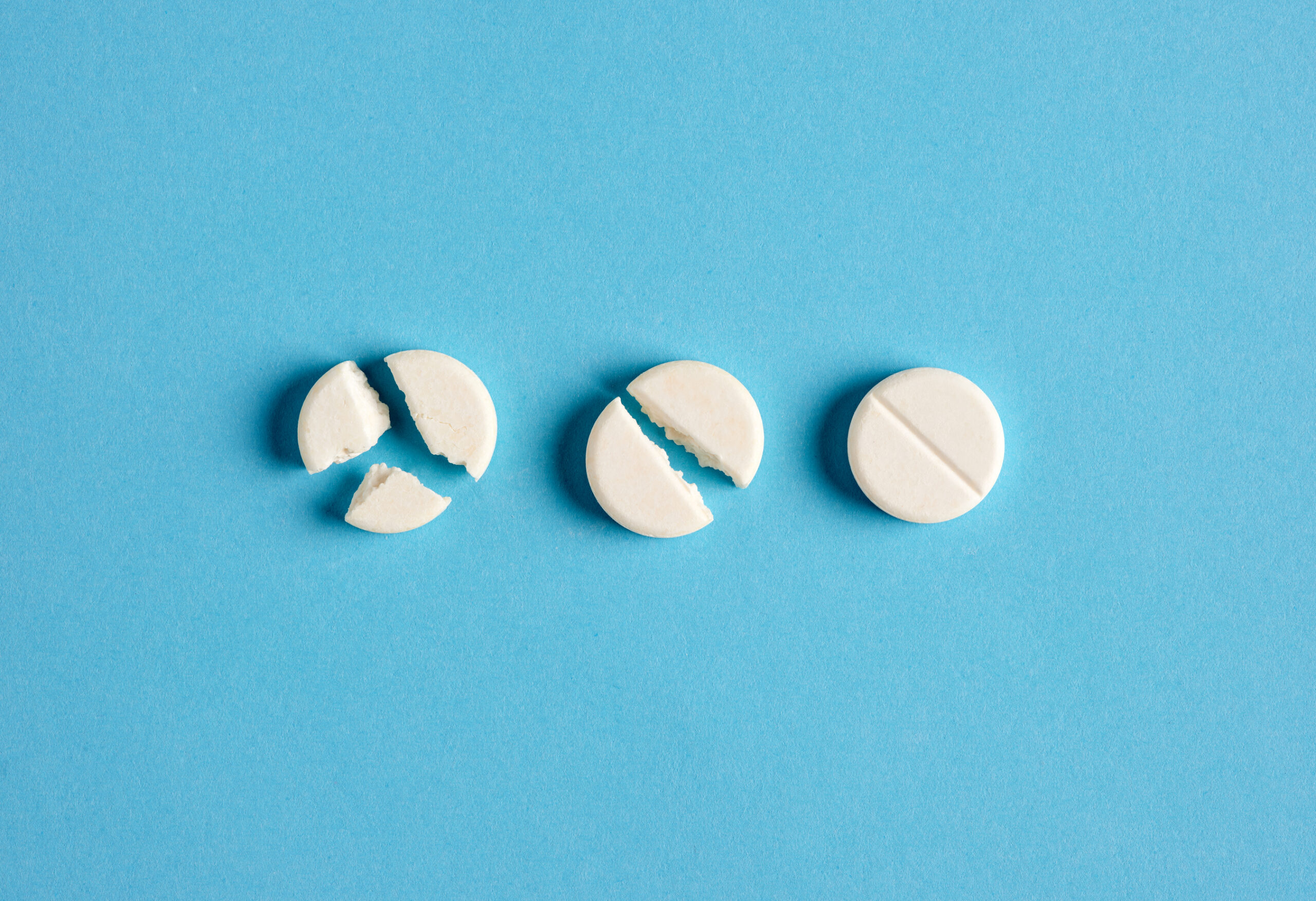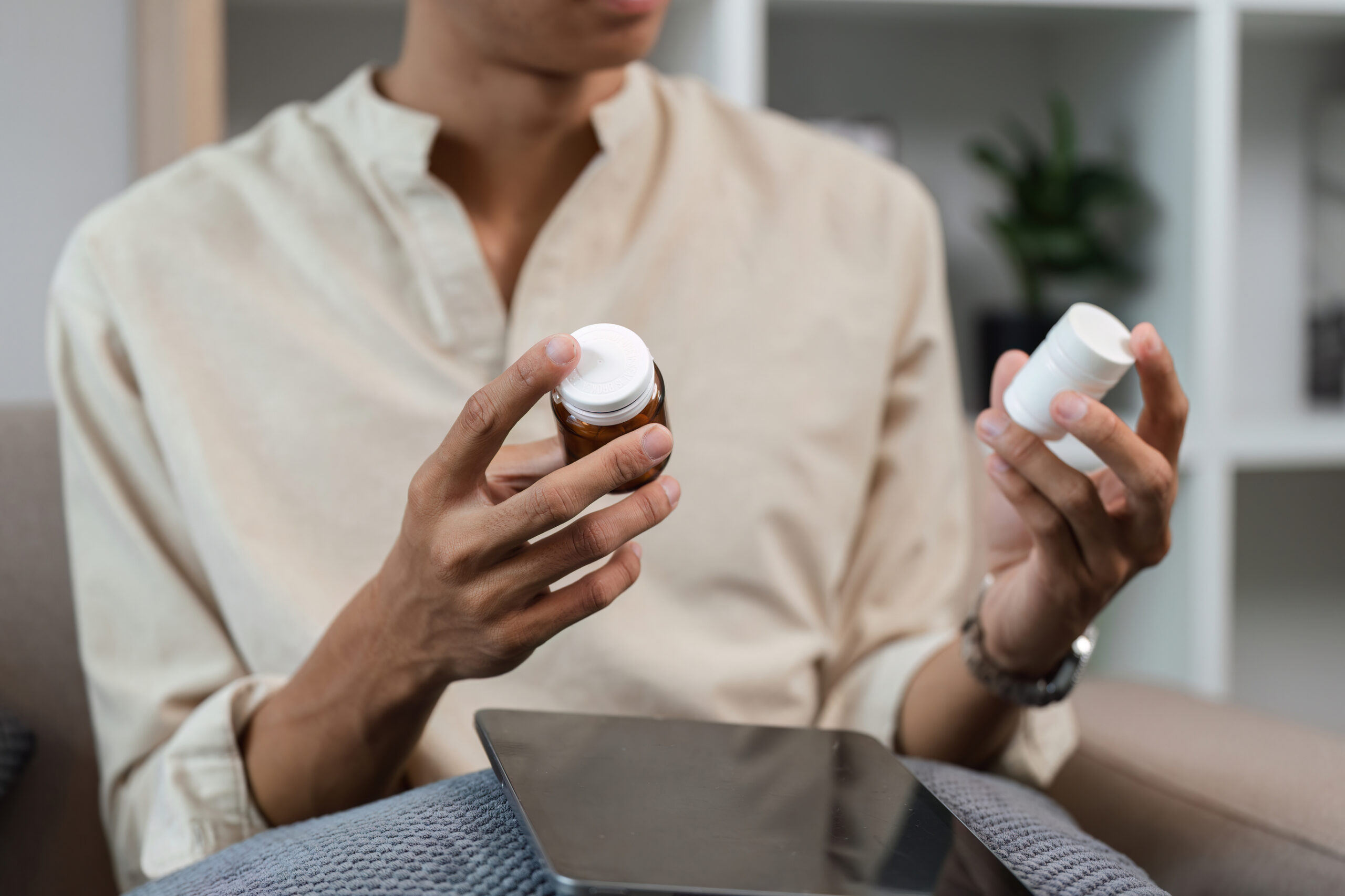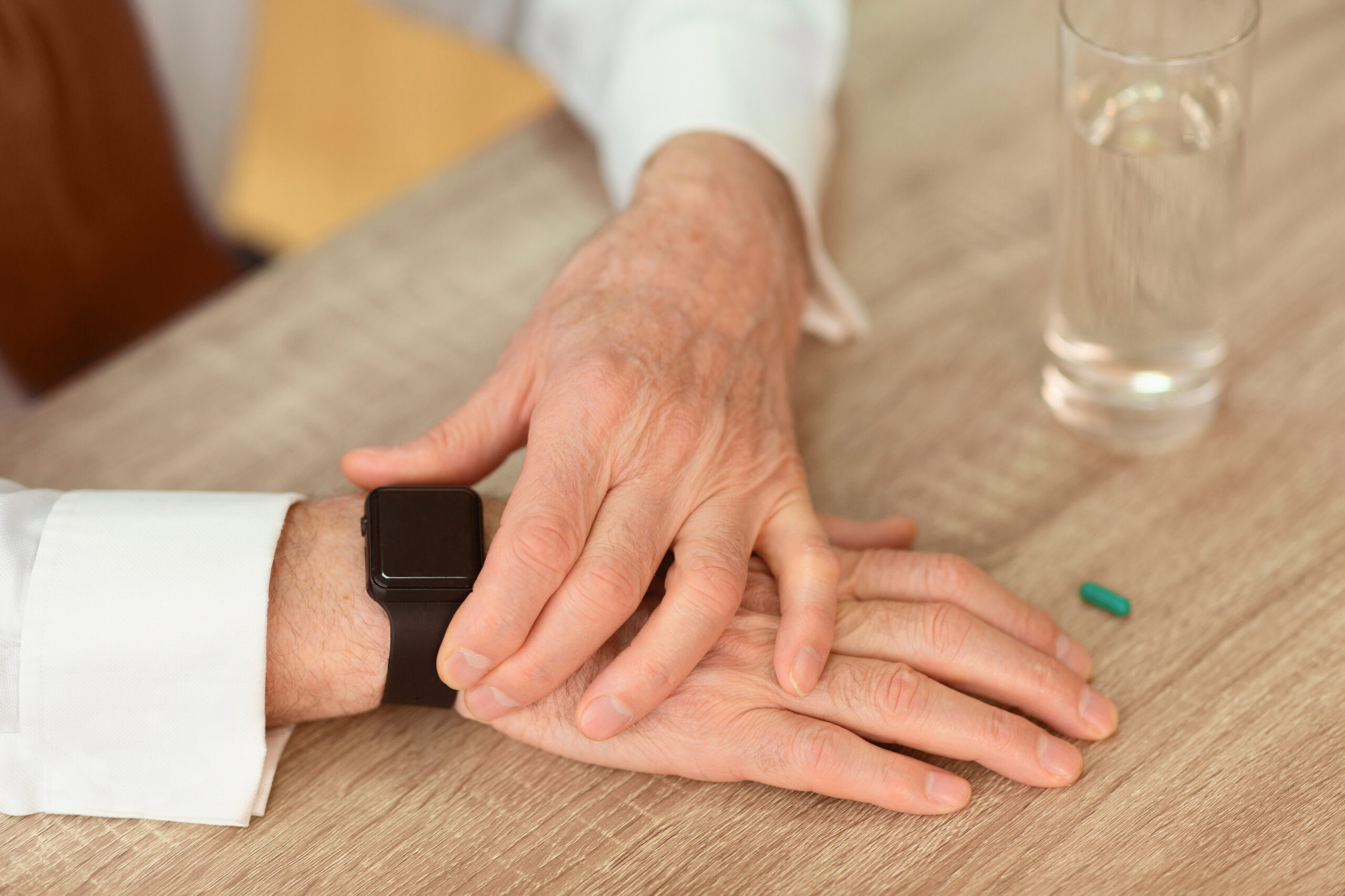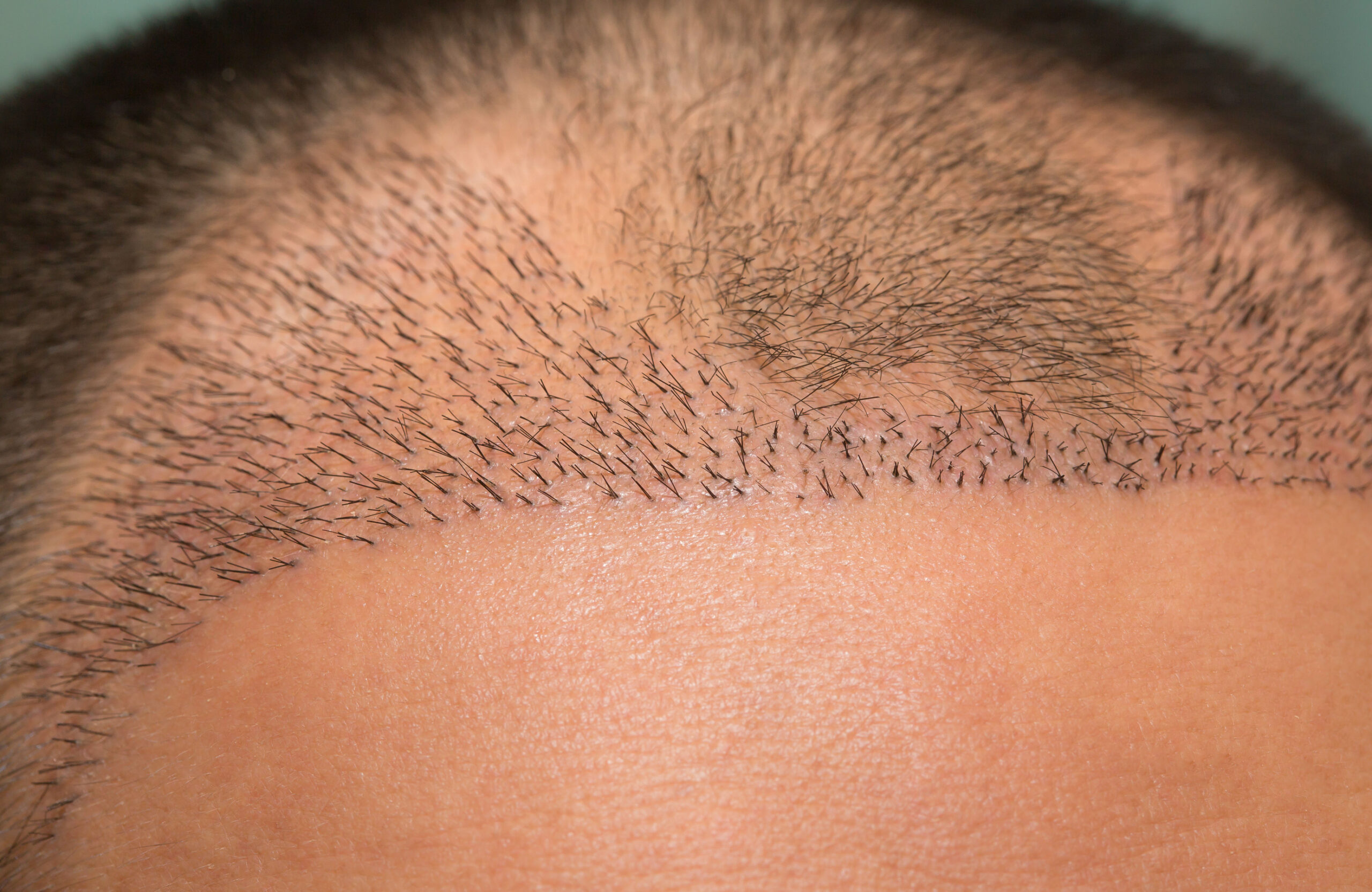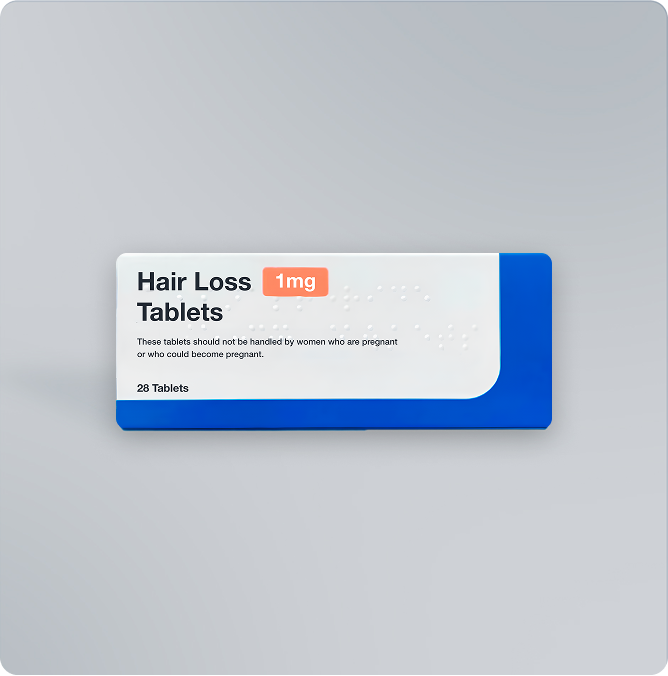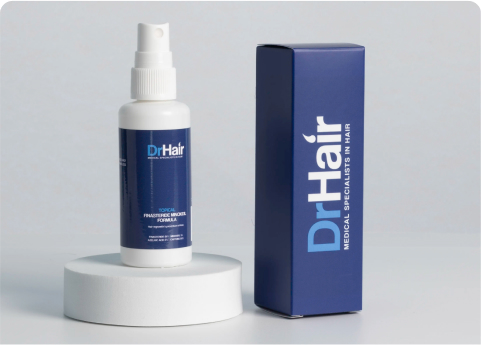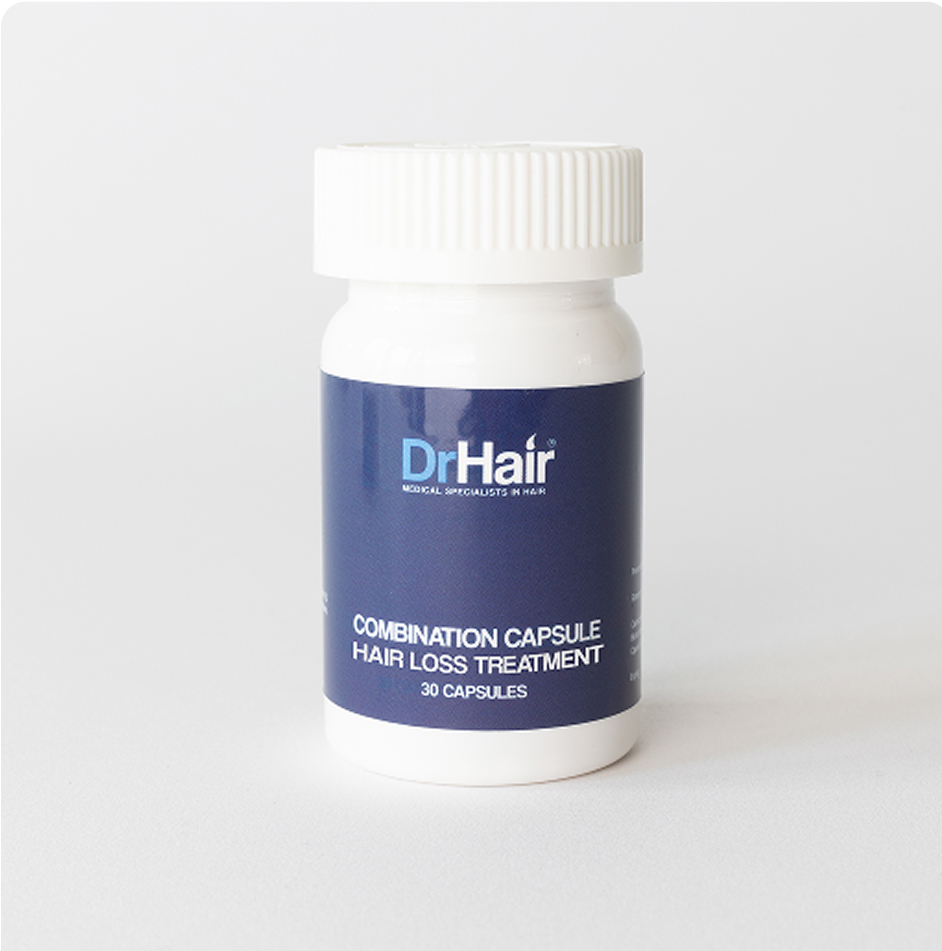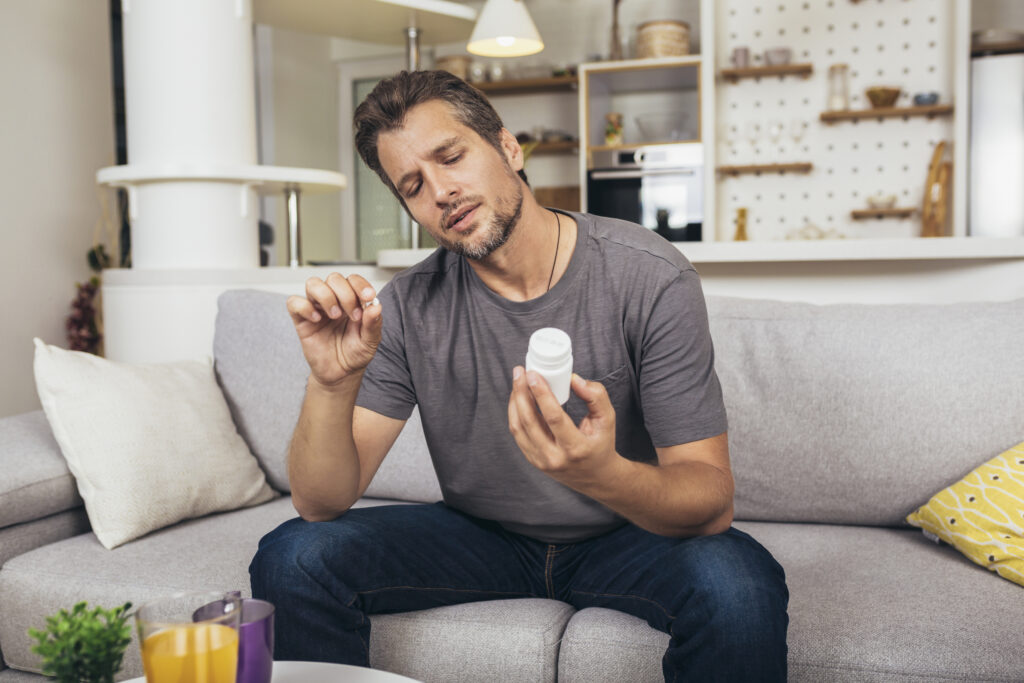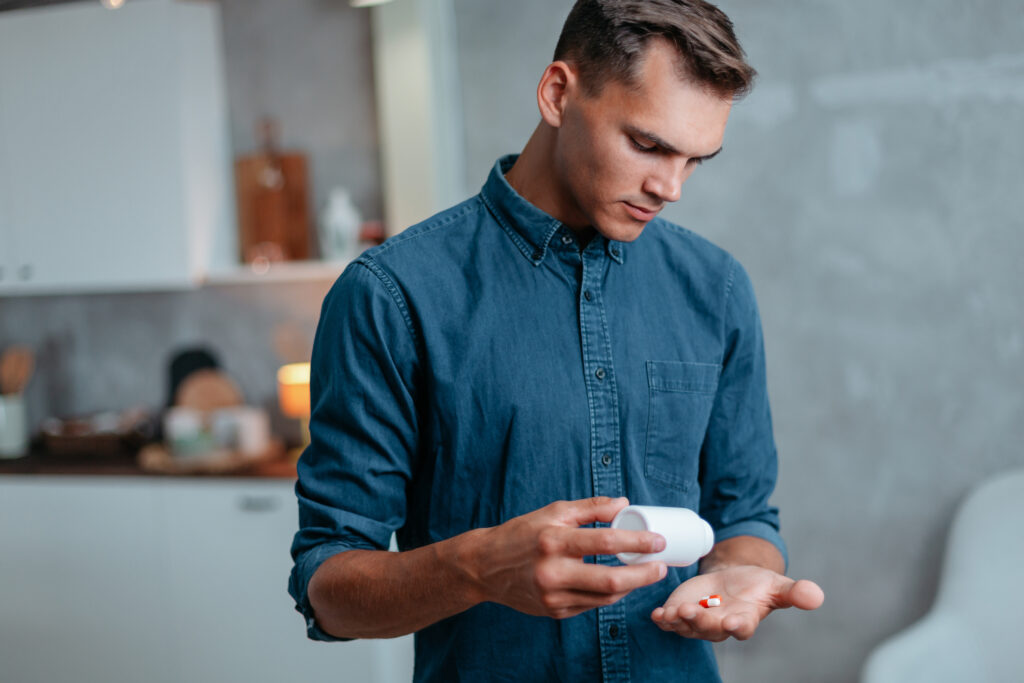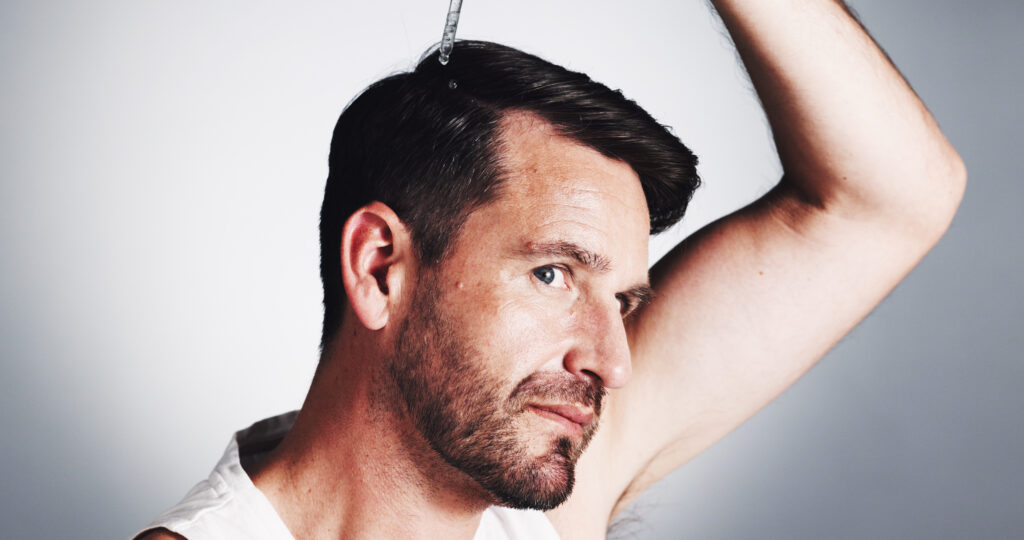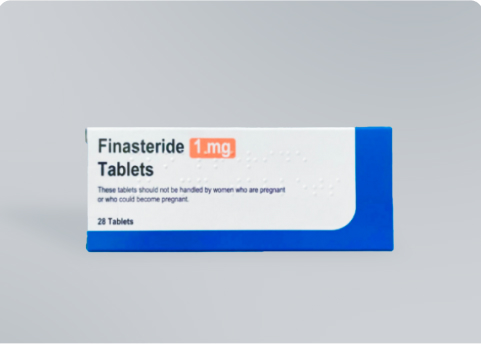Finasteride is one of the most effective non-surgical treatments for male pattern baldness. But many men are put off using finasteride by the possibility of side effects. Reported side effects of finasteride include sexual dysfunction, low mood, and depression [1].
In reality, the risk of finasteride side effects is very low. One of the largest scale studies to date reported that just 0.7% of finasteride users experienced side effects [2].
That said, if you currently have side effects, you’re at greater risk of developing them, or you’re just concerned about the potential for adverse reactions, it is possible to reduce the side effects of finasteride. Better yet, you can do this without compromising your hair gains. It’s all about finding the right solution.
Here, you’ll learn how to reduce the side effects of finasteride without compromising your hair growth, plus what to do if you experience any severe finasteride side effects.
Table of Contents
- What are the side effects of finasteride?
- How to reduce finasteride side effects without losing hair
- 1. Switch to topical finasteride
- 2. Don’t double up on doses
- 3. Consider a lower dose of finasteride
- 4. Disclose any risk factors to your doctor
- 5. Check for known drug interactions
- 6. Understand the nocebo effect
- 7. Prioritise your overall health
- 8. See a therapist
- 9. Use complementary medications
- 10. Give it time
- Other ways to reduce finasteride side effects
- What to do if you still have finasteride side effects
- Find the right hair loss treatment with DrHair
- FAQs
What are the side effects of finasteride?
Side effects of finasteride can be physical, sexual, or psychological in nature. Known side effects include:
- Temporary hair shedding
- Erectile dysfunction
- Low sex drive
- Ejaculation and fertility problems
- Low mood and depression
- Suicidal thoughts
- Breast tissue abnormalities
- Testicular pain
- Anaphylaxis
- Post-finasteride syndrome
Most of these side effects are caused by finasteride’s impact on your hormones. Finasteride works by decreasing the amount of testosterone that gets converted to dihydrotestosterone (DHT). DHT causes hair follicles to shrink and stop producing hair. Learn more about how finasteride works for hair loss.
You can take certain steps to avoid or reduce many of these side effects. Let’s take a look at the top ways to minimise the risk of finasteride side effects without losing hair.
Are you taking the right dose of finasteride?
The first thing to check is your finasteride dose. Most men with male pattern baldness are advised to take 1 mg of finasteride each day. If you’re taking more than this, you’re increasing the risk of side effects (without really boosting the chances of hair growth) [3].
If you’re taking a higher dose (such as finasteride 5 mg for benign prostate enlargement), we recommend checking with your doctor if you can safely reduce this.
How to reduce finasteride side effects without losing hair
Since the standard (licensed) dose of finasteride for male pattern baldness is 1 mg per day, the suggestions below are based on this prescription. If your finasteride is prescribed for a condition other than male pattern baldness, check with your doctor before making any changes.
Here are 12 ways to reduce finasteride side effects and get the best chance of retaining your hair.
1. Switch to topical finasteride
Topical finasteride works in the same way as oral finasteride — it reduces the amount of testosterone that gets converted to DHT. However, unlike oral finasteride, topical finasteride lowers DHT levels in your scalp without affecting the amount of DHT in your bloodstream.
As a result, topical finasteride is highly unlikely to cause systemic side effects like erectile dysfunction, infertility, or mood disorders.
Some studies have shown that topical finasteride is similar to oral finasteride in terms of effectiveness [4]. So this is one of the best ways to reduce finasteride side effects while still getting the benefits. Learn more about the side effects of topical finasteride.
2. Don’t double up on doses
Taking more than the prescribed amount of finasteride can increase the risk of side effects without helping your hair. So even if you miss a day or two of finasteride, it’s best not to overcompensate.
Stick strictly to taking no more than 1 mg per day (unless otherwise advised by your doctor).
3. Consider a lower dose of finasteride
Some men find that taking less than 1 mg of finasteride per day keeps their hairline intact without generating the same side effects. Animal studies suggest that a 0.5 mg dose of finasteride can lower DHT levels by a similar amount as a 1 mg or even 2 mg dose [5].
If you find that a lower dose of finasteride does lead to hair shedding, try adding a topical solution such as our topical finasteride + minoxidil formula to your hair loss routine. This can help stimulate hair growth without the risk of systemic side effects.
It’s also safe for most men with male pattern baldness to combine oral finasteride with minoxidil. While this won’t negate major side effects like sexual dysfunction or mood disorders, it may help you retain your hair growth while you experiment with lower doses of finasteride.
4. Disclose any risk factors to your doctor
When seeking a prescription for finasteride, it’s really important to be honest about your medical history. Certain factors — such as a history of depression, suicidal ideation, or sexual performance issues — can increase the risk of side effects from finasteride. So for the sake of your overall wellbeing it’s important that your prescribing physician knows about these conditions.
If oral finasteride isn’t right for you, there are plenty of effective hair loss treatments that can help slow balding without putting your health at risk. These include minoxidil, topical finasteride, and platelet-rich plasma therapy. Book a consultation with one of our experienced doctors to discuss your options.
5. Check for known drug interactions
If you’re already taking medication (including herbal or plant-based supplements), check if there are any known interactions with finasteride. Certain drugs can stop finasteride working as it should, putting you at risk of side effects without giving you the hair benefits you want.
Drugs that may interact with finasteride [6]
- St John’s wort — a herbal remedy used for depression
- Fluconazole and voriconazole — antifungal treatments
- Nelfinavir, saquinavir and lenacapavir — antiretroviral drugs used to treat HIV
- Diltiazem and terazosin — high blood pressure medications
- Fluvoxamine — a drug used to treat obsessive compulsive disorder
- Nefazodone — an antidepressant
- Selpercatinib, pirtobrutinib and temsirolimus — drugs used to treat different types of cancer
- Sirolimus and tacrolimus — drugs used to suppress the immune system (especially after organ transplant surgery)
Please note that this isn’t an exhaustive list. If you’re taking any medications, check with your GP for any interactions before taking finasteride.
6. Understand the nocebo effect
Finasteride and its side effects are widely reported in the media, which can make you hypervigilant when checking for side effects. This may cause a nocebo effect in some users.
The nocebo effect happens when finasteride users expect to experience side effects, then find that these symptoms materialise. According to researchers [7]:
“Nocebo effect refers to an adverse effect that results from the psychological awareness of the possibility of the side effects, but is not a direct result of the specific pharmacological action of the drug.”
Researchers have suggested the nocebo effect may be linked to erectile dysfunction in finasteride users [7]. Sexual performance issues resolved completely within 5 days of stopping finasteride, suggesting the nocebo effect was in play.
Understanding the nocebo effect can help you combat it. Try to limit your exposure to subjective accounts of finasteride use. Instead, look to large-scale clinical studies to inform your decisions and expectations of treatment.
7. Prioritise your overall health
Finasteride isn’t always the sole cause of certain side effects, particularly erectile dysfunction and low mood. You can help reduce these side effects of finasteride by making adjustments to your lifestyle. This includes:
- Drinking less alcohol
- Quitting smoking
- Losing weight if you’re overweight
- Eating a healthy diet
- Exercising regularly
What’s more, some of these activities can improve your hair health and even reduce hair loss in their own right, particularly if you’re losing hair due to stress or nutritional deficiencies.
8. See a therapist
Sexual dysfunction, depression, suicidal thoughts and certain other serious finasteride side effects can be rooted in existing psychological causes and worsened by finasteride.
Seeing a therapist can help you address any underlying mental health concerns that may be affecting your mood or sexual performance.
9. Use complementary medications
You may be able to manage certain side effects by taking additional medications that don’t interact with finasteride. For example:
- Paracetamol and certain other over-the-counter painkillers can help with testicular pain.
- Some (though not all) antidepressants are safe to take alongside finasteride and can help treat low mood and depression.
- Erectile dysfunction drugs like sildenafil (Viagra) are generally safe to take alongside finasteride (although you may be more likely to experience dizziness, low blood pressure, and headaches).
Make sure to disclose any other medications you’re taking so your GP can advise you what’s safe to take.
10. Give it time
Despite concerns around the side effects of finasteride, most studies indicate that the majority of adverse reactions are mild and temporary [8]. So any side effects may clear up on their own even if you continue taking finasteride at the same dosage.
Finasteride takes around 3-6 months to work. If your side effects are mild and manageable, it’s best to ride them out and see if they disappear on their own.
A key exception to this is if you’re experiencing suicidal thoughts, ideation, or severe depressive symptoms when taking finasteride. In these cases, you should stop taking finasteride immediately and seek help from your doctor.
Other ways to reduce finasteride side effects
While the options below may help reduce side effects of finasteride, they could also affect your hair growth. But they may be worth trying if you’ve exhausted other options and still have lingering side effects.
1. Reduce medication frequency
Some users report that taking finasteride every other day helps them maintain their hair while minimising side effects. A study examining the effects of switching to taking a daily finasteride tablet every other month concluded that the hair maintenance effects were similar to taking finasteride continuously without a break [9].
This is certainly possible, especially if you’re in the early stages of hair loss. But if you cut down how often you take finasteride you should be prepared to see some additional shedding.
2. Switch to minoxidil
Minoxidil is another highly effective treatment for male pattern baldness. Like finasteride, it’s licensed in the UK, so its safety and effectiveness have been studied extensively.
Minoxidil is usually considered less effective than finasteride for treating male pattern baldness [10]. But if you have unmanageable side effects from finasteride, it may be worth making the switch to minoxidil, especially if you’re in the early stages of male pattern baldness.
3. Consider a hair transplant
Unlike finasteride, which needs to be taken regularly (if not continuously) to get the best results, a hair transplant is a one-time procedure that gives you permanent results. So while it’s much more expensive than finasteride, it can help restore your hair more effectively.
You will need to take steps to prevent further hair loss even after a hair transplant. But you may be able to do this with minoxidil or another preventative therapy, avoiding the need for finasteride altogether.
What to do if you still have finasteride side effects
If you’ve exhausted the options on this list but haven’t managed to reduce your side effects, you may need additional support from your GP. Book an appointment with your doctor for advice on how to deal with any medium- or long-term side effects from finasteride.
You can also stop taking finasteride for hair loss at any time if you decide the risks outweigh the benefits.
Find the right hair loss treatment with DrHair
DrHair is committed to providing the most effective hair loss treatments to you. Whether you want to trial finasteride and see the impact of any side effects, or find an alternative topical treatment with no systemic reactions, you’ll find the hair loss product for you in our range. Take our quick assessment (less than a minute) and get a treatment decision in as little as 2 hours.
Take a look at all our hair loss products to decide which is right for you. Still unsure? Book a consultation with our doctor-led team to discuss your options.
FAQs
Learn more about reducing the side effects of finasteride in these frequently asked questions.
Yes. Most finasteride users don’t report any side effects [2, 7]. Despite finasteride’s reputation for difficult side effects, affected users are actually in the minority. Thousands of men use finasteride without experiencing any problems.
Yes — in many cases, finasteride side effects decrease with continued treatment, eventually disappearing altogether [8].
It takes at least 3 months to see visible results from using finasteride. For some users, it can be 6-9 months. So if the side effects are manageable, finasteride works best if you use it for at least 3-6 months to see the impact on your hair.
Finasteride is part of a group of drugs called 5-alpha-reductase inhibitors. If you can’t tolerate finasteride, other drugs in this group (such as dutasteride) may also present side effects, so they’re probably best avoided.
Instead, look to medications that help improve hair growth via a different mechanism. This may include minoxidil, PRP therapy, or low level laser therapy. Learn more about how minoxidil works for hair loss.


